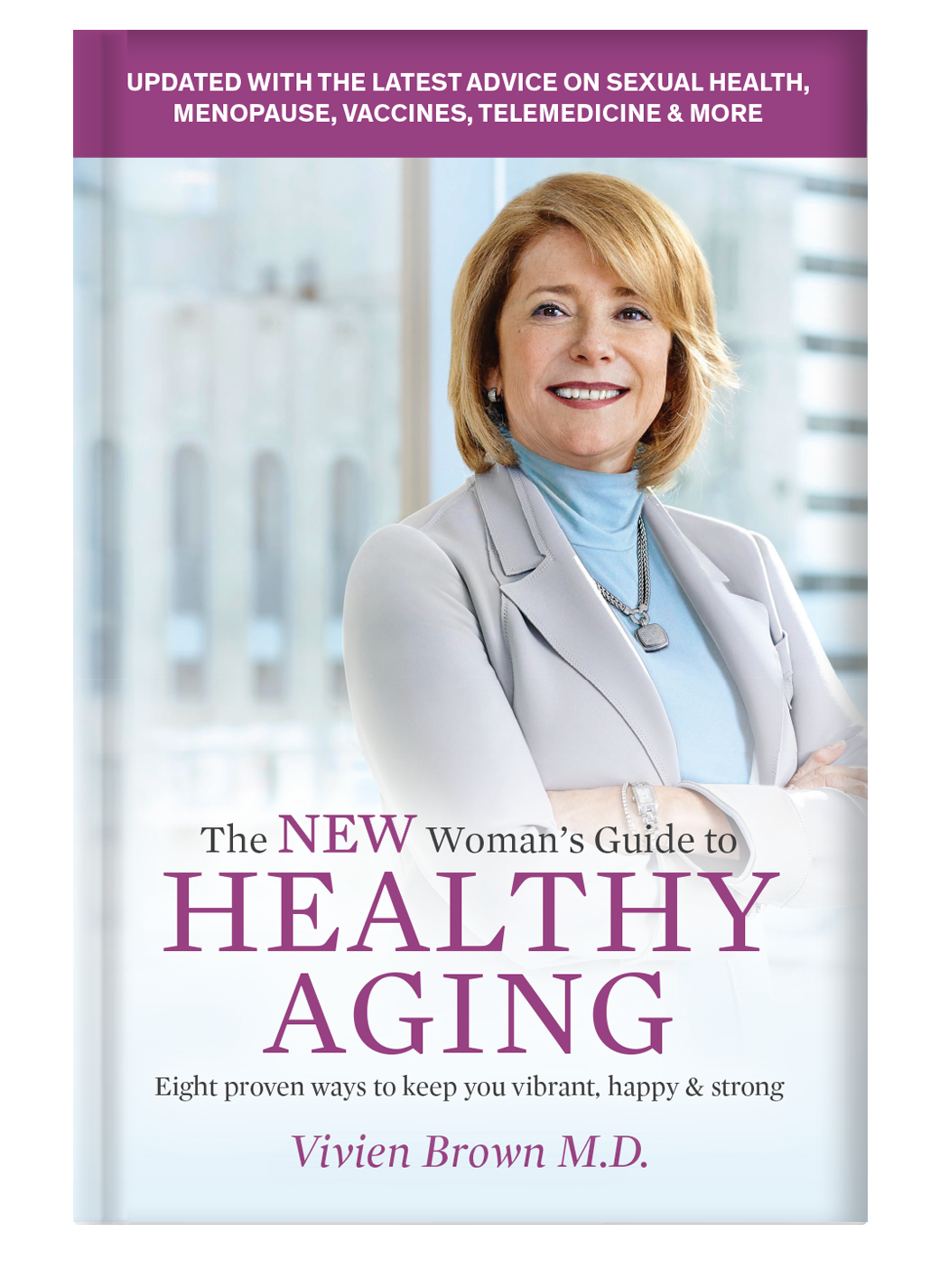 The NEW Woman’s Guide to Healthy Aging: Eight Proven Ways to Keep You Vibrant, Happy, & Strong is all about you as a woman in the early 21st century and your ongoing health as the century continues to unfold. It is about aging well as the years pass by so that you remain vital and independent for as long as possible.
The NEW Woman’s Guide to Healthy Aging: Eight Proven Ways to Keep You Vibrant, Happy, & Strong is all about you as a woman in the early 21st century and your ongoing health as the century continues to unfold. It is about aging well as the years pass by so that you remain vital and independent for as long as possible.
In this book I focus on eight health topics, each in a separate chapter—nutrition, exercise and sleep, brain health, immunization and disease prevention, menopause, cardiac health, osteoporosis, and women’s sexual health. There are many more topics I could have included, but I chose these because they are areas that affect almost every woman. Here is a bird’s-eye view of what you can expect to find in each chapter.
Chapter 1, The Edible Feast: Diet and Nutrition, is so named because most of us could stand to improve the way we eat. This chapter discusses the importance of good nutrition throughout life and the harmful impact of poor nutrition on immediate and long-term health. Section A in the Appendix contains information related to this chapter, such as details of Body Mass Index, the MIND diet and dietary recommendations from Health Canada, and additional information about cholesterol and calcium.
Chapter 2, Pump It Up and Let It Rest: Exercise and Sleep, explains why activity and rest are essential to health and what can happen if you do not get enough of either. Section B in the Appendix contains exercise recommendations from Health Canada and links to the exercise recommendations of the Heart and Stroke Foundation of Canada and of Osteoporosis Canada.
Chapter 3, Healthy Hemispheres: The Aging Brain, discusses anatomical and physiological differences between men’s brains and women’s brains and consequent differences between men and women in brain health.
Chapter 4, The Value of Vaccines: Immunization-Preventable Diseases, includes information about disease prevention and the incredible advances medical science has made in vaccine research and creation. It lists and discusses the vaccines that every healthy woman should be sure to have.
Chapter 5, Marking Middle Age: Menopause and After, covers the impact that loss of estrogen has on a woman’s health. It discusses the symptoms of menopause and the sometimes controversial topic of hormone therapy, including how to decide—with your doctor—if it is right for you.
Chapter 6, Happy Valentine’s Day: Maintaining Heart Health, explains how a woman’s experience of heart disease may differ from a man’s and what this means for women’s heart health.
Chapter 7, Robust or Brittle? Bone Health and Osteoporosis, discusses exactly what osteoporosis does to bones and explains the first-line treatments for this disease. A photographic illustration in this chapter, comparing healthy bone and osteoporotic bone, proves the old adage, “A picture is worth a thousand words.” The chapter also makes the point that osteoporosis is not a normal part of aging and provides strategies to protect your bone health.
Chapter 8, Intimate Differences: Sexuality and Health, discusses the fact that a satisfying sex life is a normal component of good health. It points out, however, that many women experience a lack of sexual interest and desire and that there is a great degree of commonality in their experience. Finally, it highlights two new and effective pharmaceutical options that, according to many women who have used them, can change both attitude and experience for the better.
Thanks to advances in medical science, we now have great options for disease prevention, options that are easy to understand and easy to implement in our daily lives. We also have an abundance of information about strategies to reduce the risk of developing cognitive impairment. Nothing is failsafe: genetic and environmental factors can override even our most valiant efforts to attain and maintain good health. But this book will give you both solid information and practical tools to tilt the odds in your favour and reduce your risk of serious physical and cognitive problems as you age.
In the end, it is up to each of us to do our part to remain vital and healthy. In fact, it is both a personal and a social responsibility. Please be assured: taking time to take care of yourself is selfless, not selfish. Why? Well, among the many things that COVID-19 has taught us is the extent of our interconnectedness. And that interconnectedness requires us to be proactive. Maintaining our health means maintaining our ability to contribute to the well-being of our families and of our communities, and to have a productive impact on society.
As individuals we can do our very best, and with the right health and social policies in place, as a community we can do even better. But, you know what they say: advice works only if you act on it. I hope you will.
